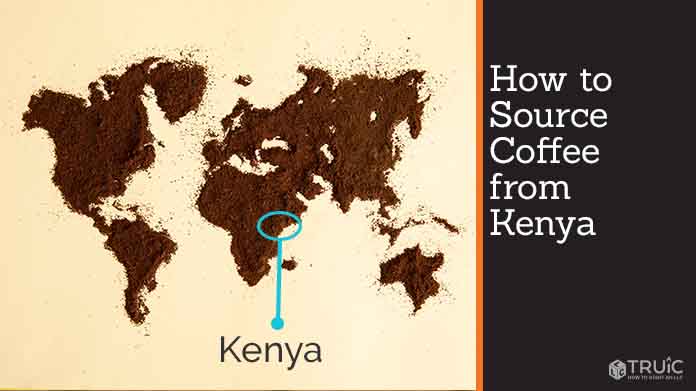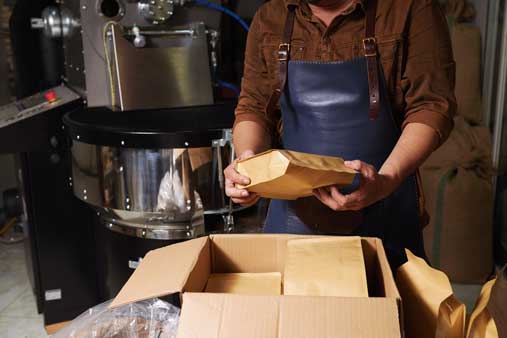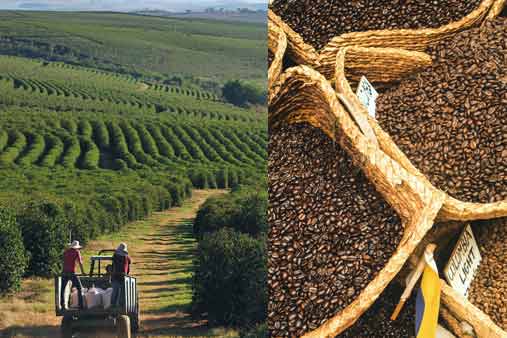How to Source Coffee From Kenya
Known for producing some of the best coffees in the world, Kenya has a reputation for quality despite being a relatively new coffee-growing country. Its coffee, which almost exclusively features Arabica beans of the Bourbon varietal, has a wine-like acidity and bright, but deeply complex flavor profiles.
Recommended: Read our full, in-depth How to Start a Coffee Shop Business guides, inspired by coffee professionals, they will help make your coffee dreams real, from sourcing beans to hiring baristas, choosing the best POS system, forming an actual company, and everything in between.

A History of Kenyan Coffee
Coffee production began in Kenya between 1889 and 1893 after the British introduced the plant to the country. This relationship brought years of slavery and oppression to the people farming coffee during this time.
It wasn’t until 1960, after the Mau Mau Uprising, that Kenyan people broke free and started to grow coffee independently without British interference. This coincided with a period of regeneration of the country and construction of Kenya’s own government, which enforced strict pricing on coffee farmers. In recent decades, the Kenyan government decreased its restrictions on coffee and gave farmers more freedom to set their own prices and make decisions regarding their business.
More recently, economic turmoil stemming from a combination of low global coffee prices, climate change, and population growth resulted in lower output from Kenya’s coffee farmers. However, Kenya still exports 95% of all the coffee it produces — most of which comes from the country’s more than 600,000 small farms.
Kenyan Coffee Production
Unlike other coffee-producing countries that work with exporters or use direct trade, Kenya sells 85% to 95% of its coffee beans at coffee auctions. Coffee auctions involve farms or cooperatives selling their product to the highest bidder, which can sometimes lead to higher prices than seen in other countries.
Because many Kenyan producers simply drop their coffee beans off for sale at these auctions, buyers can find it challenging to distinguish one micro-lot from another. As a result, small coffee farmers in Kenya continue to seek opportunities for a direct route into the international market.
Since 1954, many of Kenya’s coffee-producing regions reside in the country’s central highlands. Due to the county’s close proximity to the equator, Kenyan farmers can harvest coffee twice a year. This location — between 1,400 and 2,000 meters above sea level — also provides an ideal environment for growing Arabica beans because of the ample rainfall and deep, nutrient-rich soil that’s acidic in certain areas.
Processing Methods
Most Kenyan farmers process their coffee beans using the wet, or washed, method. However, the Kenyan method of wet processing coffee takes a step beyond the classic washed method. In traditional washed processing, producers process the coffee beans for 24 hours. In Kenya, producers double that fermentation time.
After the first 24 hours, they agitate the beans and then ferment them for an additional 24 hours. They then rinse the beans and let them soak overnight. Kenyan coffee producers believe this soaking step encourages the beans to germinate again, which should promote extra sweetness in the coffee.
Types of Kenyan Coffee
Because Kenyan farmers typically categorize their coffee into various types for auction, here’s an overview of each coffee type. These specific categorizations make the traceability of Kenyan coffee a little easier for buyers who may find it difficult to track beans by origin through the country’s coffee auctioning system.
In Kenya, coffee producers traditionally categorize their green coffee beans by “grade” and by “class.” The size determines the grade of each bean. This ensures consistency during roasting because roasting coffee beans of varying sizes will lead to an uneven roast. Mostly, however, sized-based grading stems from the belief that coffee grown at higher altitudes produces denser, larger, and higher-quality beans.
After sorting beans by grade, quality then determines their class on a scale from one to 10 in which 10 represents the best quality. However, categorization by class continues to grow less common. This makes a Kenyan coffee’s grade alone the increasingly standard classification.
The various grades of Kenyan coffee also break down into two groups based on how farmers process their beans — with the washed or natural method. Producers using the washed method sort their beans using a variety of screens in order to combine beans into the appropriate grade by size. These washed grades include:
- Kenya E (Elephant Bean): As the largest of any Kenyan coffee beans, elephant beans also may carry the name “E grade.” When removed from the coffee cherry, these beans feature two coffee seeds joined together. A genetic defect is responsible for producing these large beans. After producers separate the two coffee seeds, they each retain an “ear” from handling.
- Kenya PB (Peaberry): This bean category represents about 10% of Kenya’s coffee production. It’s included as a subcategory in the “E grade” due to its large size with a single coffee bean rather than two smaller halves.
- Kenya AA: Another “E grade” coffee bean, many people consider these beans among the world’s finest. Grown at high elevations — usually more than 6,600 meters above sea level — these coffee beans have a reputation for balanced acidity, bold flavor, and a refreshing sweetness.
- Kenya AB: This grade represents a combination of A and PB beans mixed together to form the AB variety. It uses two different screen sizes: 6.2 millimeters for “B grade” beans and 6.8 millimeters for “A grade” beans. The inclusion of B beans, for some, decreases the quality of this coffee. However, many people still consider this grade a premium Kenyan coffee.
- Kenya C: Coffee beans thin enough to fall through a 6.2-millimeter screen during Kenya B sorting earn a grade of Kenya C.
- Kenya TT: Using an air extraction method, producers combine the least-dense beans from the Kenya AA, Kenya AB, and Kenya E grades into the Kenya TT grade.
- Kenya T: Beans from the Kenya C grade that are broken, just chips of beans, or thin and small fall into this lower grade known as Kenya T.
- Kenya MH/ML: This grade accounts for about 7% of Kenyan coffee. It includes all unpicked or fallen coffee cherries, which usually have a much more sour flavor profile than beans in the other grades.
Coffee beans processed using the natural method fall into one of just three grades because very few Kenyan producers use this method. The natural process grades include:
- Mbuni: This grade includes beans that deteriorated during the natural process.
- MH (Mbuni Heavy): Naturally processed beans that are heavy, dense, or large fall into the MH grade.
- ML (Mbuni Light): This grade includes the lighter and smaller naturally processed beans.
Key Regions
Here’s a guide to the key characteristics found in Kenya’s main coffee-growing regions:
- Central Region: This region — which includes Nyeri, Murang’a, Kiambu, Thika, and Kirinyaga — is known as one of the most fertile growing areas in Kenya. It’s home to most of Kenya’s large coffee estates as well as many small farms.
- Eastern Region: This region consists of Embu, Machakos, Tharaka County, Makueni County, and the Meru Central District. It has the highest altitude of all the regions, enabling it to produce very high-quality coffee.
- Coastal Region: This region encompasses Taita-Taveta County — the only place used for coffee production due to the area’s lack of nutrient-rich soil. However, this region boasts a substantial amount of sunshine despite a lack of steady rainfall.
- Western Region: This region envelops Kakamega, Vihiga County, and Bungoma. Steady rainfall is a key factor in the successful growth of agriculture within this region, which produces some of the best coffee in Kenya.
- Nyanza Region: This region holds Kisii, Nyamira County, the Nyabondo Plateau, and Oyugis. Its nutrient-rich soils and high altitude make it an ideal area for growing coffee.
Importing Kenyan Coffee
If you want to source coffee from Kenya, you’ll need to buy it from a coffee auction, importer, or broker until Kenyan coffee producers have a direct route to international markets.
Check out our wholesale coffee sourcing guide which includes information about regions, processing, and buying directly from coffee farmers.


